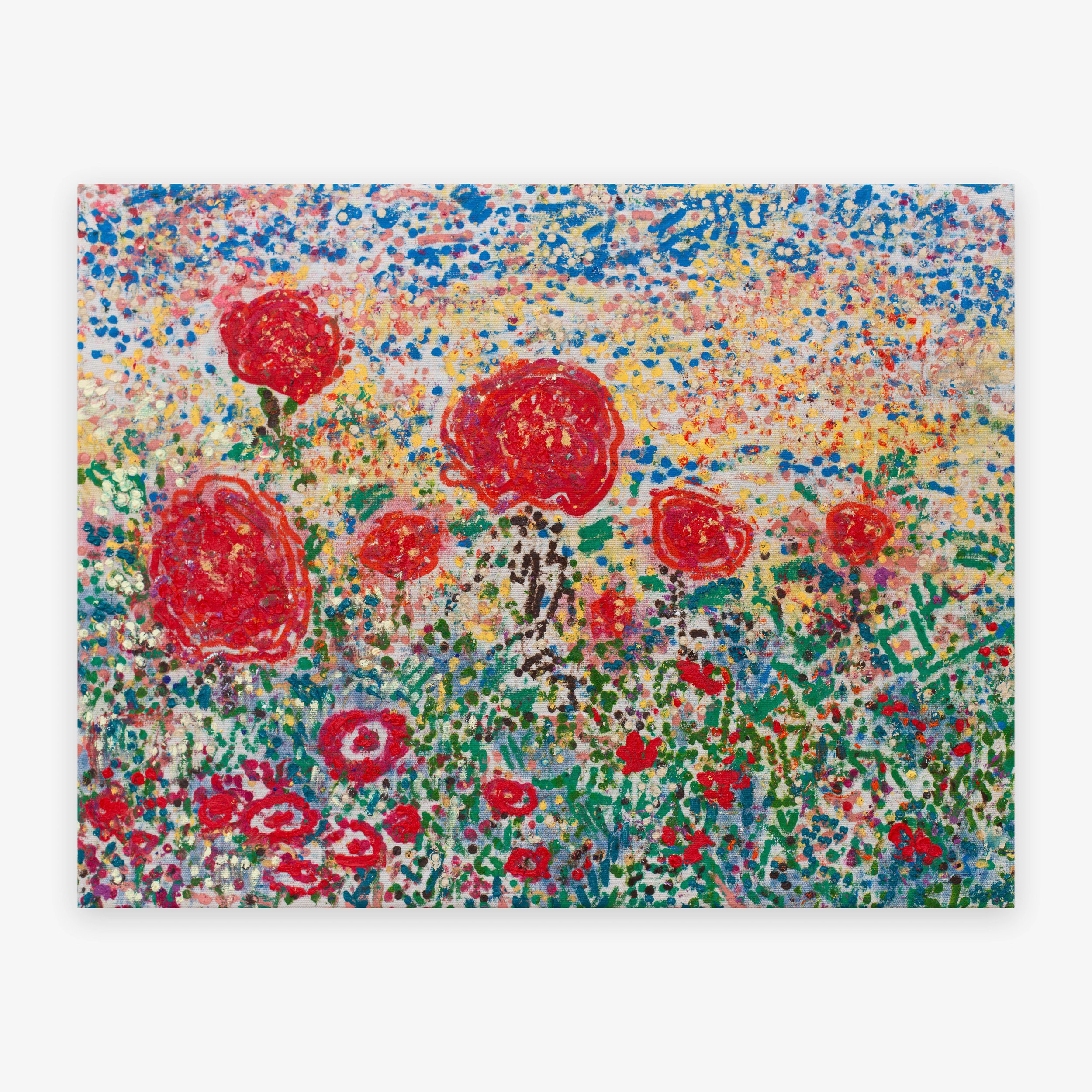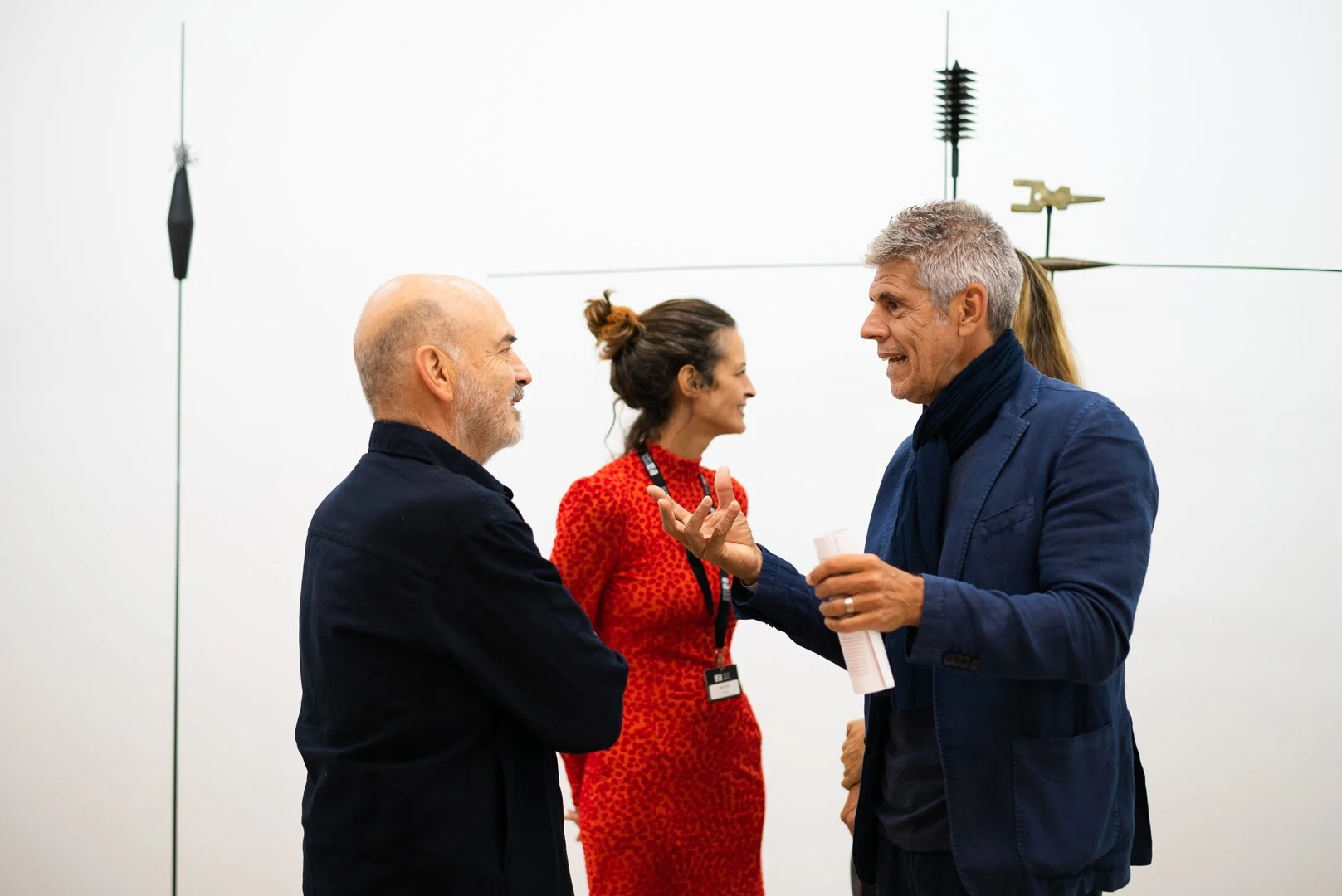XIPPAS
Paris | France
Genève | Switzerland
Punta del Este | Uruguay
Directors | Renos Xippas & Sofía Silva
Founded in 1990 by Renos Xippas in Paris, the Xippas gallery is one of the oldest galleries in the Marais. Over the last thirty five years, Xippas has worked alongside its artists to promote their talent. The gallery has published numerous catalogues and collaborated with prestigious institutions internationally. More than 500 exhibitions have been shown within its venues in Paris, Athens, Geneva, Montevideo and Punta del Este.
Renos Xippas inaugurated his gallery in 1990 in the heart of the Marais district in Paris with a major exhibition dedicated to Takis, in the building it still occupies: 108 rue Vieille du Temple. Since then, Xippas has operated as a platform to promote and discover international artists in France including Lucas Samaras, Peter Halley, Vik Muniz, Robert Irwin, Vera Lutter, Takis, etc. It has also played an important role in the career of French artists such as Philippe Ramette, Céleste Boursier-Mougenot, Valérie Jouve, Bertille Bak, Farah Atassi, Yves Bélorgey, Yvan Salomone, Dominique Blais.
In the beginning of XXI century, the gallery expanded internationally. Today Xippas is present in three countries: France (Paris), Switzerland (Geneva) and Uruguay (Punta del Este). The biggest of all the projects now its galleries space in Punta del Este (Uruguay), situated in a 12 hectare natural site of the famous South American seaside resort. Xippas have been continusly collaborating with latinamerican artistis and even more since its arrival in South American: Janaina Tschäpe, Waltercio Caldas, Cao Guimaraes, Leandro Erlich, Marco Maggi, Rita Fischer, Ricardo Lanzarini, Pablo Reinoso, Dani Umpi.
Renos Xippas
ESTE ARTE 2026 | VICENTE GRONDONA
Vicente Grondona
ESTE FOCUS
Booth walkthrough with the artist
Vicente Grondona
In Spanish, without translation.
Open to the public.
Date: TBD
Time: TBD
Venue: Pavilion VIK
Ruta 10, Km 182.5, José Ignacio
CURATORIAL VISION
Henri Lebasque in Lobos
Acuarela de los canteros (Watercolor of the Stonemasons)
Curated by Manuel Neves
Les abeilles rêvent de fleurs, les fleurs de soleil
(The bees dream of flowers, the flowers of the sun)
— Unknown poet
Xippas Punta del Este presents, for the first time at ESTE ARTE 2026, a solo exhibition by Argentine artist Vicente Grondona. This curatorial project was conceived especially for the fair and is the result of long conversations between the artist and the curator. Grondona will exhibit a previously unseen selection of his most recent works, titled Acuarela de los canteros (Watercolor of the Stonemasons). Emerging from the Buenos Aires contemporary scene in the late 1990s, his painting explores the genres of landscape and floral ornamentation, a kind of subgenre of the traditional still life. In these works (created during 2025), the artist focuses on the representation of plants and flowers, particularly roses, from a historicist perspective while also appropriating the traditions, techniques, and colors of Post-Impressionism. However, these paintings are not the result of direct observation or photographic reference; rather, they arise from imagination and reminiscence. These evocations are imbued with the atmosphere of his long stays in Lobos, in the Province of Buenos Aires.
BIO
Vicente Grondona (Argentine, b. 1977) studied at the Escuela Nacional de Bellas Artes Prilidiano Pueyrredón in Buenos Aires and spent extended periods in Paris. His work foregrounds material as subject and medium, often using charcoal, wood, and pigments in combination with synthetic products like epoxy and varnish. He has exhibited widely in Argentina and abroad, with solo and group exhibitions at MNBA (2014), arteBA (2014), Galería Alberto Sendrós (2012), and SlyZmud (2013). He lives and works in Buenos Aires.
ESTE ARTE 2025 | Takis
Takis
Artist portrait ©️ K.E.T.E ARCHIVE
BIO
Takis (1925-2019, Athens) was a prominent figure in the European postwar art scene, renowned for his exploration of invisible forces and the omnipresence of energy in all things. His work often centered on the energy of magnetic fields, a concept he incorporated into his artistic experiments from the 1950s onwards. Takis is best known for his invention of telemagnetic sculptures, where everyday metal objects defy gravity using magnets and float in space. This innovative approach combined physical laws with technology, allowing him to "introduce a new, continuous, and living force into sculpture." His work blurs the boundaries between art, science, and technology, often incorporating industrial and mechanical elements.
Takis' works are housed in major collections worldwide, including the Centre Georges Pompidou (Paris), Tate (London), MOMA (New York), the Guggenheim Museum (New York), the Menil Collection (Houston), and the Peggy Guggenheim Collection (Venice), among others. His contributions to art and technology have cemented his legacy as a key figure in the development of kinetic and experimental sculpture.
CURATORIAL
Takis, a pioneering Greek artist, is renowned for his exploration of invisible forces and the dynamic presence of energy in art. His revolutionary telemagnetic sculptures, created in the late 1950s, challenge traditional sculpture by using magnets to defy gravity, allowing everyday metallic objects to float in space. Through these works, Takis invited us to rethink physical laws and the interaction of art with science and technology.
“A Signal” gathers some of Takis’ most iconic creations, where industrial and mechanical components are transformed into vehicles of energy. These sculptures embody Takis’ vision of introducing a “new, continuous, and living force” into art, inviting viewers to contemplate the unseen forces that influence our world. The exhibition underscores the artist’s legacy in blending the physical and metaphysical, urging us to perceive art as a dynamic intersection of energy, technology, and the laws of nature.
In A Signal, Takis' work continues to resonate, offering a platform for reflection on the intersection of human perception and the invisible energies that govern life. By melding art with science, Takis transformed our understanding of space, technology, and artistic expression, making this exhibition a powerful reminder of his lasting impact on contemporary art.
ESTE ARTE 2024
Rita Fisher (1974, Young)
ESTE ARTE 2023
Leandro Erlich (1973, Argentina)
ESTE ARTE 2022
Vik Muniz (1961, Brazil)
ESTE JOURNAL 2021
Lionel Esteve (1967, France) | Ricardo Lanzarini (1963, Uruguay) | Rita Fischer (1972, Uruguay) | Waltercio Caldas (1946, Brazil)
ESTE ARTE 2020
Yamandú Canosa (1954, Uruguay) | Rafael Carneiro (1985, Brazil) | Leandro Erlich (1973, Argentina) | Rita Fischer (1972, Uruguay) | Cao Guimarães (1965, Brazil) | Ricardo Lanzarini (1963, Uruguay) | Marco Maggi (1957, Uruguay) | Vik Muniz (1961, Brazil) | Pablo Reinoso (1955, Argentina) | Pablo Siquier (1961, Argentina) | Janaina Tschäpe (1973, Germany) | Dani Umpi (1974, Uruguay) | Sigismond de Vajay (1972, France)
ESTE ARTE 2019
Waltercio Caldas (1946, Brazil) | Yamandú Canosa (1954, Uruguay) | Stéphane Dafflon (1972, Switzerland) | Sigismond de Vajay (1972, Argentina-Switzerland) | Leandro Erlich (1973, Argentina) | Alberto García-Alix (1956, Spain) | Cao Guimarães (1965, Brazil) | Ricardo Lanzarini (1963, Uruguay) | Marco Maggi (1957, Uruguay) | Vik Muniz (1961, Brazil) | Pablo Reinoso (1955, Argentina) | Pablo Siquier (1961, Argentina) | Janaina Tschäpe (1973, Germany) | Dani Umpi (1974, Uruguay)
ESTE ARTE 2018
Yamandú Canosa (1954, Uruguay) | Alberto García-Alix (1956, Spain) | Ricardo Lanzarini (1963, Uruguay) | Marco Maggi (1957, Uruguay) | Vik Muniz (1961, Brazil) | Pablo Reinoso (1955, Argentina) | Pablo Siquier (1961, Argentina) | Eduardo Stupia (1951, Argentina) | Janaina Tschäpe (1973, Germany) | Dani Umpi (1974, Uruguay)
ESTE ARTE 2017
ESTE ARTE 2016
ESTE ARTE 2015
What is your ideal type of collector? Decided.
What, on the contrary, is the sort of collector you try to avoid at all cost? Non intelligent.
Who is the collector from whom you have learnt the most, and why? Mysterious.
What, if any, is the mistake you would never make again? You learn a lot from mistakes.
What, if any, is the best deal you have ever made? The ones all parts win.















































